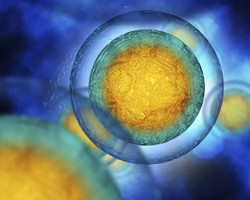Cell transport and recycling proteins
Cilia, hair-like projections on the cell surface, play a range of roles in mammals including chemical sensation and signal transduction. An enzyme, ADP-ribosylation factor-like protein 13B (Arl13b) is known to play a role in cilia formation and their maintenance. In humans, mutations in Arl13b cause Joubert Syndrome, a rare disorder that affects the cerebellum. Symptoms include lack of muscle tone and abnormal breathing patterns with moderate mental retardation. Recent research has indicated that Arl13b may play a significant role in trafficking of materials in membrane-bound vesicles (endocytic trafficking). The EU-funded 'Role of Arl13b in endocytic trafficking' (ARL13B TRAFFICKING) project aimed to determine the functional and regulatory role of this guanosine-5'-triphosphate (GTP)ase enzyme. Using gene silencing techniques, the project scientists found that Arl13b is likely to control a sorting step from the early endosome. Material destined for late endosomes such as dextran was found to accumulate in the absence of Arl13b. Moreover, the recycling of molecules dependent on this endocytic mechanism slowed down. Looking for effectors or regulators of Arl13b, the team identified non-muscle myosin heavy chain IIA, or Myh9. Arl13b interacts with Myh9 to lock onto actin. An important scaffolding protein, actin is crucial for cilia function and endocytosis. The scientists identified another effector for Arl13b, a subunit of the exocyst. Significantly, the exocyst complex is involved in tethering vesicles from the Golgi Apparatus and the endocytic recycling compartment. Recent research has shown that the exocyst is required for ciliogenesis and proper localisation of ciliary cargo. The researchers argue that this interaction is linked to regulation of ciliary cargo by Ar1l3b. ARL13B TRAFFICKING research has discovered two major regulators of a protein important in many cell functions but particularly in cell cargo movement. Mutations of the protein cause disorders linked to primary cilia structure. Uncovering the molecular mechanisms could form the basis of targeted therapies for related disorders.







